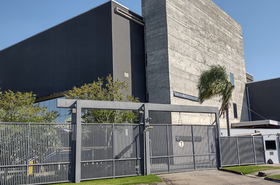Time is running out,with just eight years before The Climate Neutral Data Centre Pact (CNDCP) comes into force - and I believe many organizations are not ready.
The sector has had an extremely challenging couple of years with the impact of Covid-19 and the increasing demands for data as global computing capacity continues to rapidly increase. It is therefore entirely understandable that some organizations may have been focussed on other areas as 2030 seems a long way away – however there is significant work to be done!
Old data centers are a problem
By 1st January 2030 CNDCP requires signatories to make a binding commitment to achieve Power Use Effectiveness (PUE) of between 1.3 and 1.4 in sites built up to 2025. It has been estimated that around 60 percent of data centers in Europe are in excess of eighteen years old.
Amongst these the older data centers will have often been constructed with PUEs of 2.0 or more. In their current form they could be significantly distant from the required standard and in breach of their owners 'CNDCP commitments. They will also look increasingly unattractive to tenants pursuing socially responsible energy and carbon agendas. These operational sites will be challenging to upgrade, especially those with high availability requirements. They will require experienced design and construction teams, working closely with operational teams, in order to effect the changes to the engineering infrastructure that are required without service interruption.
The simplified response to this problem may be to demolish and reconstruct at a convenient point before the deadline through a managed vacation and migration of IT processing. However, is not necessarily the best answer, as the original design and financial plans for these sites were often authored with the structural and architectural elements having a life expectancy of sixty years.
Rebuilding creates emissions
There is also a significant embodied carbon penalty to pay in demolition and rebuilding. A substantial amount of the construction work involves the use of energy dense concrete and steel to such an extent that refurbishing an existing facility can save in the order of 70 percent - 80 percent of the carbon cost of a new build. An upgrade and refresh to critical infrastructure could liberate trapped electrical capacity for deployment to serve higher density and growing IT loads, for example through UPS replacement or cooling solution changes.
These types of interventions will be more easily accommodated in Tier III facilities having two concurrently maintainable power and cooling paths, although the work will require careful planning and right-first-time execution. Nevertheless, such a solution overcomes the power availability challenges and takes the facility down a path towards better PUE performance.
However, the PUE thresholds are not the only challenge embedded within the CNDCP. The pact requires data center electricity demand to be matched by 75 percent renewable energy or hourly carbon-free energy by the end of 2025 and 100 percent by end 2030. This is particularly challenging as these requirements are to be delivered in a period when demand for renewable resources will be universally increasing as a result of competing demands from the growth in big data, the decarbonization of industry, commerce, transport and domestic consumers.
The good news is we have seen significant energy efficiency improvements delivered as part of a general refreshment of assets that are beyond their economic life. BCS believes there is still time for organizations to successfully achieve the targets for CNDCP - but the clock is ticking.






